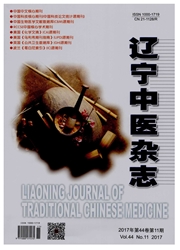

 中文摘要:
中文摘要:
目的:通过观察49例气虚血瘀型冠心病患者证素分布,芪参益气滴丸对冠心病患者心、气虚、血瘀三个证素的疗效,探讨运用证素理论进行辨证论治的可行性与关键点。方法:采用自身前后对照方法,门诊治疗符合纳入标准的气虚血瘀型冠心病患者,给予症状评分及聚类分析,并给予芪参益气滴丸治疗1个月,观察治疗前后的症状积分差异。结果:经聚类分析认为气短、神疲乏力、自汗体现了气虚证,胸痛、胸闷、心悸、面色紫黯,体现了血瘀证。芪参益气滴丸对患者胸痛、胸闷、气短、神疲乏力、心悸等症状治疗后统计学有显著差异。结论:芪参益气滴丸对心、气虚、血瘀三个主要证素有治疗效果,抓住主要证素进行辨证论治符合中医核心理论,具有优效性。
 英文摘要:
英文摘要:
Objective:The study observed the clinical effect of Qishenyiqi dropping pill in the treatment of CHD with Qi deficiency mad Blood stasis type. All the 49 patients were evaluated by three TCM syndrome elements : Heart, Qi deficiency, blood stasis. Methods : Serf-control method was used. All the patients were treated with Qishenyiqi dropping pill only for a month. The syndromes were clustered before the therapy and scored pre and post treatment. Results :Shortness of breathe,weakness and tiredness, spontaneous perspiration are the main connotation of Qi deficiency. Chest pain, chest distress,palpitation and dim complexion are the main connotation of blood stasis. The Qishenyiqi dropping pill can improve the symptoms of Chest pain, chest distress, Short- ness of breathe, weakness and tiredness. Conclusion : Syndrome elements were the key to syndrome differentiation.
 同期刊论文项目
同期刊论文项目
 同项目期刊论文
同项目期刊论文
 期刊信息
期刊信息
